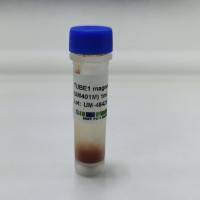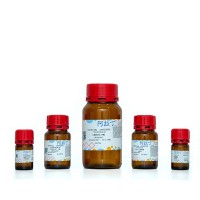The Study of Membrane- or Receptor-Bound Neuropeptides by NMR
互联网
612
An X-ray crystal structure of a neuropeptide bound to its native receptor protein would provide a wealth of information concerning
the structural requirements for ligand-receptor binding. Unfortunately, many neuropeptide-protein complexes are very difficult,
if not impossible, to obtain as a single crystal. This difficulty prohibits the use of X-ray crystallography to determine
the structure of neuropeptide-receptor complexes. Other than X-ray crystallography, nuclear magnetic resonance spectroscopy
(NMR) is the only spectroscopic technique that can provide structural information at atomic resolution (1
). The very large size of most neuropeptide receptor proteins (300–600 amino acid residues) makes determination of the three-dimensional
structure of the neuropeptide-receptor complex by NMR also very difficult. To date, the use of sequence-specific resonance
assignment methods has been limited to uniformly isotope labeled proteins containing 100–150 amino acid residues (1
). Owing to overlapping resonances from the receptor, determination of the three-dimensional structure of only the bound ligand
may also require uniform isotopic labeling (15
N, 13
C) of the neuropeptide. In light of the difficulties involved in the direct observation of neuropeptide-receptor complexes,
other indirect methods must be employed to obtain information concerning possible biologically active conformations of a neuropeptide.
One method extensively used by medicinal chemists involves the preparation and biological evaluation of a large number of
conformationally restrained analogs of the neuropeptide. The three-dimensional structures of analogs with good and bad biological
activity are then determined by NMR. These structures are then analyzed in terms of the observed biological activity in order
to provide insight into the biologically active conformations of the neuropeptide. This approach is effective, but it is very
time consuming, requiring the syntheses and biological evaluation of a large number of compounds. The conformational analysis
of neuropeptides themselves has provided limited structural information. Most neuropeptides are small (<25 amino acid residues)
linear polypeptides lacking a defined secondary structure in aqueous environment (2
,3
).
![铱,di-μ-氯四[3-甲基-2-(6-甲基-2-吡啶基-KN)苯基-KC]二配位化合物,≥95%(NMR),阿拉丁](https://img1.dxycdn.com/p/s14/2024/0619/476/4857815635993523081.jpg!wh200)






